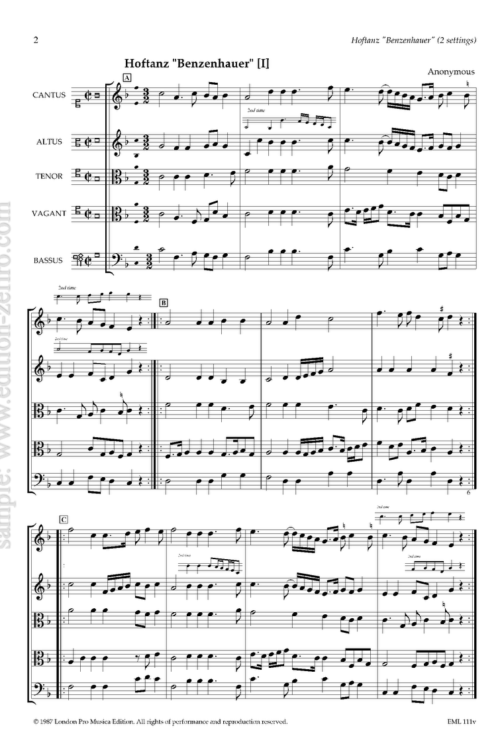Thomas Lupo, who died in 1628, was one of a family of musicians of Italian origin, who worked in England for about a hundred years from 1540.
These four short fantasias are printed here after the Dutch anthology XXIX Konincklycke Fantasien, Op. 3 Fioolen de Gamba enander Speel-tuigh te gebruycken, published in Amsterdam by Paul Matthysz in 1648; the pieces, do, however, survive in a number of English manuscript sources. The allocation of the parts in the partbooks of the Konincklycke Fantasien is a little curious, and we put the line in the top stave that seems to be most like a cantus part, whether or not it appears in the Hooghste-Geluit.
The pieces are one of a group of Lupo fantasies with a rather distinctive scoring, with two top parts of violin range, and a bass part that is on average almost two octaves lower. The style of the music is also different from Lupo’s more conventional 3-part fantasies, being a little more Italianate, and generally fairly light in character. In arranging these pieces for recorders, I have transposed the music up a fourth, but adapted the bass part so that it will fit easily on a bass recorder, and does not move too far away from the top parts: this has resulted in a a series of minor changes too numerous to list here (a critical edition of Thomas Lupo’s three-part instrumental music was published by Boethius Press). The bass part can of course easily be played on an 8-foot instrument such as viola da gamba, cello or dulcian (curtal), if the bass recorder is found to be too weak.
In an ideal world we would have printed these pieces a tone higher, to fit on G altos, but sadly most recorder players still use F instruments for consort music. Those players who do have G instruments should transpose the music up a tone, or read as if playing F instruments.
A few editorial accidentals are printed in brackets. In no. 3, the transposition should theoretically have resulted in a flat in the key- signature, which would have seemed rather odd for a piece pretty well in G major: as almost every F is marked sharp in the 1648 print (equivalent to B natural in the transcription) this should not pro- duce any unnecessary ambiguity. The pieces appear as nos. 15, 16, 18 and 8 in Konincklycke Fantasien.
(Bernard Thomas)






